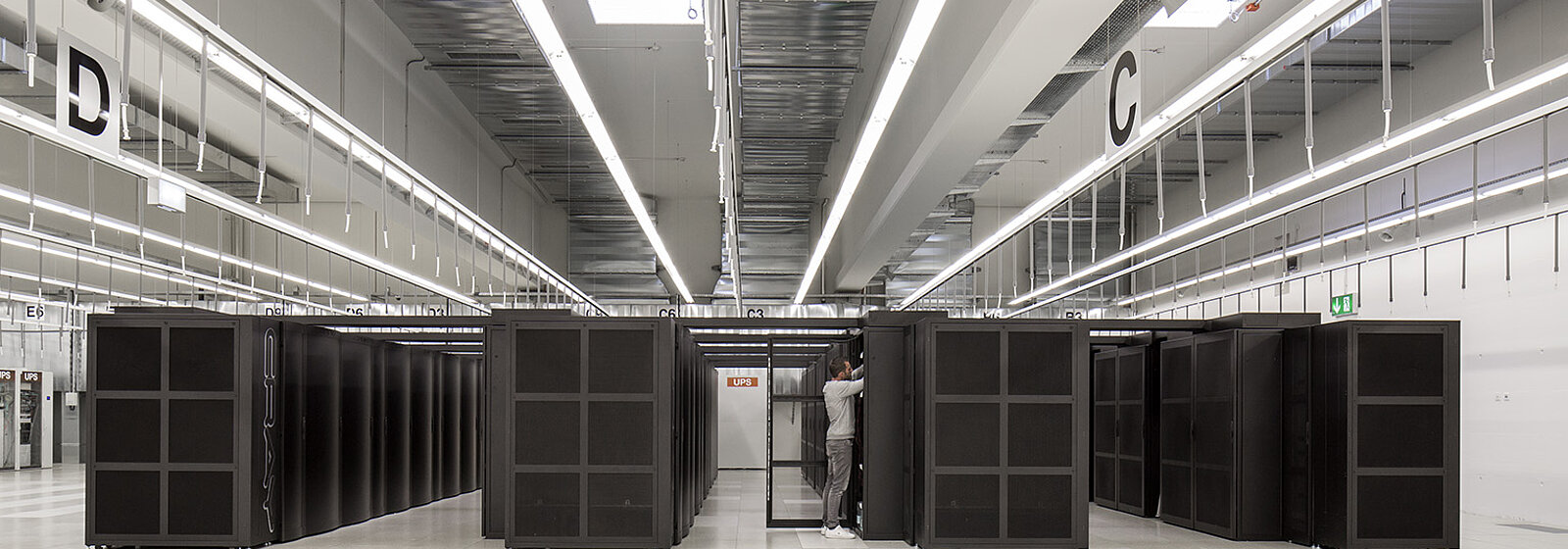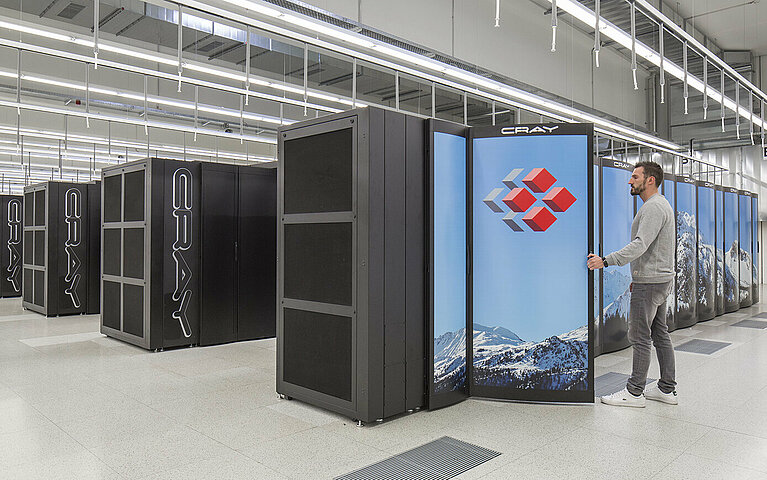June 19, 2017 - by CSCS
With a peak performance of seven petaflops, “Piz Daint” has been Europe’s fastest supercomputer since its debut in November 2013. And it is set to remain number one for now thanks to a hardware upgrade in late 2016, which boosted its peak performance to more than 25 petaflops. This increase in performance is vital for enabling the higher-resolution, compute- and data-intensive simulations used in modern materials science, physics, geophysics, life sciences and climate science. Data science too, an area where ETH Zurich is establishing strategic research strength, calls for high-power computing facilities. These fields involve the processing of vast amounts of data. The new system is now well equipped to provide an infrastructure that will accommodate the increasing demands in high performance computing (HPC) up until the end of the decade.
Thanks to the new hardware, researchers can run their simulations more realistically and more efficiently. In the future, big science experiments such as the Large Hadron Collider at CERN will also see their data analysis support provided by “Piz Daint”.
ETH Zurich has invested CHF 40 million in the upgrade of “Piz Daint” – from a Cray XC30 to a Cray XC40/XC50. The upgrade involved replacing two types of compute nodes as well as the integration of a novel technology from Cray known as DataWarp. DataWarp’s “burst buffer mode” quadruples the effective bandwidth to and from storage devices, markedly accelerating data input and output rates and so facilitating the analysis of millions of small, unstructured files. Thus, “Piz Daint” is able to analyse the results of its computations even while they are still in progress. The revamped “Piz Daint” remains an extremely energy-efficient and balanced system where simulations and data analyses are scalable from a few to thousands of compute nodes.
Specifications
| Model | Cray XC40/Cray XC50 |
| Number of Hybrid Compute Nodes | 5 320 |
| Number of Multicore Compute Nodes | 1 431 |
| Peak Floataing-point Performance per Hybrid Node | 4.761 Teraflops Intel Xeon E5-2690 v3/Nvidia Tesla P100 |
| Peak Floating-point Performance per Multicore Node | 1.210 Teraflops Intel Xeon E5-2695 v4 |
| Hybrid Peak Performance | 25.326 Petaflops |
| Muliticore Peak Performance | 1.731 Petaflops |
| Hybrid Memory Capacity per Node | 64 GB; 16 GB CoWoS HBM2 |
| Multicore Memory Capacity per Node | 64 GB, 128 GB |
| Total System Memory | 437.9 TB; 83.1 TB |
| System Interconnect | Cray Aries routing and communications ASIC, and Dragonfly network topology |
| Sonexion 3000 Storage Capacity | 6.2 PB |
| Sonexion 3000 Parallel File System Peak Performance | 112 GB/s |
| Sonexion 1600 Storage Capacity | 2.5 PB |
| Sonexion 1600 Parallel File System Peak Performance | 138 GB/s |

